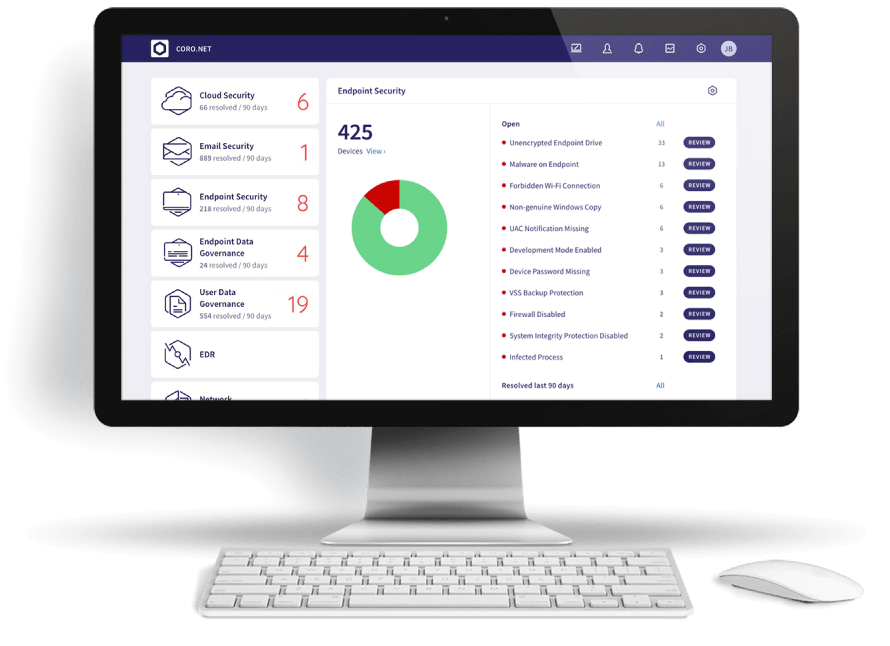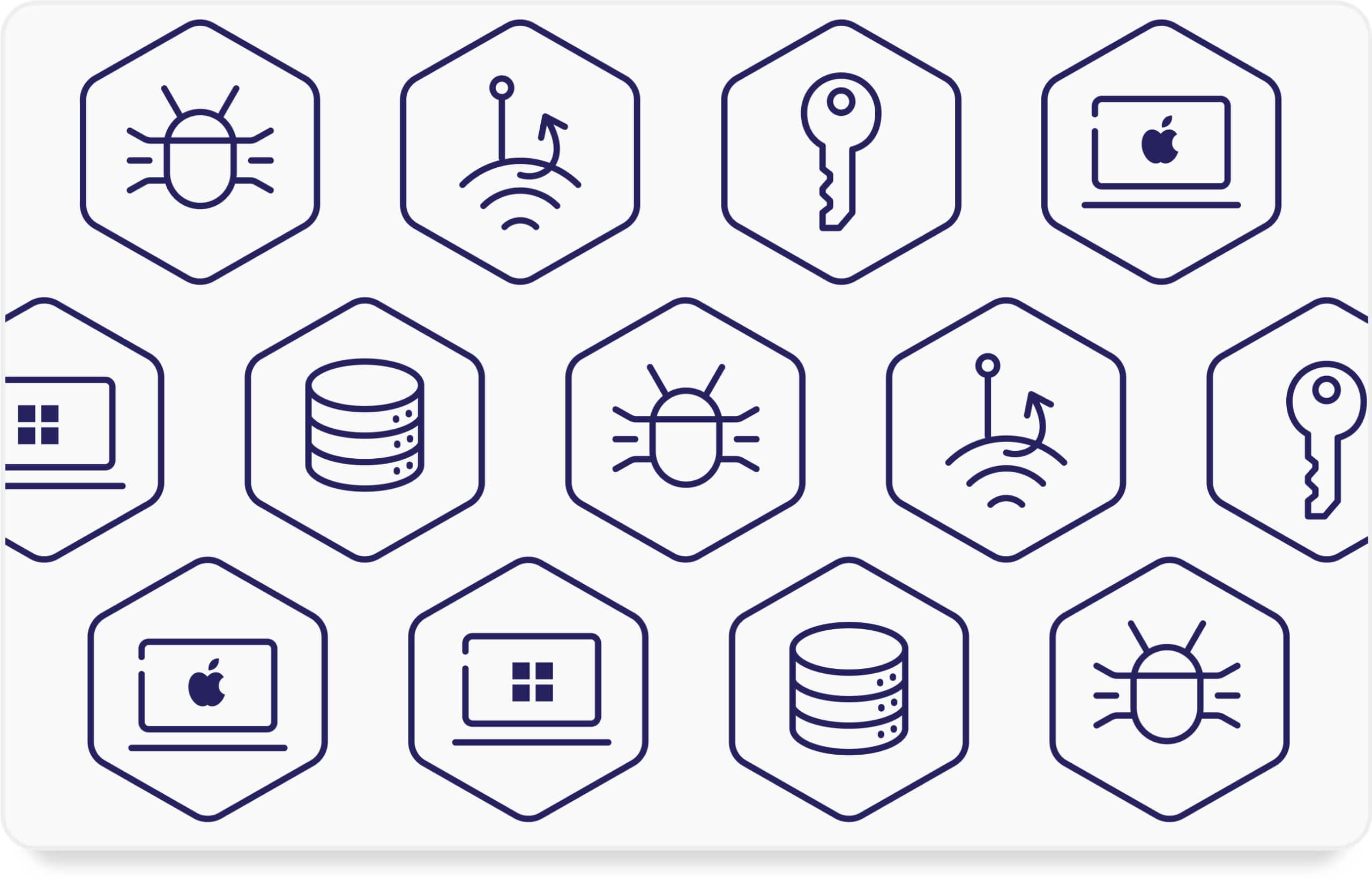An attack surface is the sum total of all the possible points, or “vectors,” through which an attacker might attempt to breach a system’s security and gain unauthorized access to its resources or data. In other words, the attack surface represents all the potential avenues of digital attack that are available to adversaries seeking to compromise a system’s security posture.
Attack surfaces include not only the external entry points (such as network interfaces, web applications, and physical access points) but also internal components, protocols, and interfaces that could be exploited and used to extract data.
The best way to reduce the likelihood of successful cyber attacks is to minimize and secure these entry points.
Forms/Types of Attack Surfaces
An attack surface can manifest in various forms, each representing different potential vulnerabilities that could be exploited. Here are some common types of attack surfaces:
- Network attack surface: This includes all network interfaces, protocols, and services exposed to external networks, such as the Internet or local area networks (LANs). Other examples include open ports, network services (e.g., FTP, SSH, HTTP), and communication channels (e.g., Wi-Fi, Bluetooth).
- Application attack surface: Application attack surfaces encompass all entry points and functionalities exposed by software applications, including web applications, mobile apps, biometric access control systems, and desktop software, through application code, APIs, user interfaces, and authentication mechanisms.
- Physical attack surface: Physical access points and components of a system that could be targeted by attackers. This includes devices such as servers, workstations, routers, mobile devices, endpoint devices, and IoT devices, as well as physical infrastructure like data centers, wiring closets, and access control systems.
- Human attack surface: Potential vulnerabilities introduced by human users, including employees, administrators, and customers. Social engineering techniques, phishing attacks, and insider threats exploit human weaknesses to gain unauthorized access to systems or sensitive information.
- Third-party attack surface: Attack surfaces that arise from dependencies on external entities, such as vendors, suppliers, partners, and service providers. Integrations with third-party APIs, software libraries, cloud services, and supply chain components introduce additional attack vectors that can be exploited by adversaries.
- Data attack surface: All data assets and repositories within an organization, including databases, file systems, cloud storage, and backups. Common threats associated with data attack surfaces are data leakage, unauthorized access, and data manipulation.
- IoT attack surface: IoT devices, sensors, and actuators connected to networks introduce new vulnerabilities, such as insecure firmware, default credentials, and lack of encryption, which can be exploited by attackers to compromise systems or launch large-scale attacks.
- Cloud attack surface: Security risks associated with cloud computing environments, including Infrastructure as a Service (IaaS), Platform as a Service (PaaS), and Software as a Service (SaaS). For example, misconfigurations, shared responsibility model misunderstandings, and insecure APIs are common sources of vulnerabilities in cloud environments.
Why Should Businesses Care About Attack Surfaces and Attack Surface Reduction?
Attack surfaces can directly impact an organization’s security, resilience, regulatory compliance, reputation, and competitive positioning. So, by proactively identifying, assessing, and mitigating these surfaces through attack surface analysis, companies can better protect themselves against cyber threats. Here’s some more reasons:
Reason #1: Risk Management
Attack surfaces represent potential vulnerabilities that adversaries could exploit to compromise the security of a business’s systems, networks, and data. Understanding these risks helps businesses proactively protect themselves against cyber threats and minimize the likelihood of costly data breaches or security incidents.
Reason #2: Data Protection
Attack surfaces encompass entry points through which attackers could gain access to sensitive data, such as customer information, intellectual property, and financial records. By securing digital attack surfaces and physical attack surfaces, you can safeguard your valuable data assets and maintain trust with customers, partners, and stakeholders.
Reason #3: Regulatory Compliance
Many industries are subject to regulatory requirements and compliance standards governing data protection, privacy, and cybersecurity. Failure to adequately secure attack surfaces could result in non-compliance penalties, fines, legal liabilities, and damage to the organization’s reputation.
Reason #4: Business Continuity
Cyber attacks targeting critical systems and infrastructure can disrupt business operations, leading to downtime, financial losses, and reputational damage. Securing attack surfaces helps mitigate the risk of cyber incidents and ensures business continuity by preventing disruptions to essential services, applications, and processes.
Reason #5: Competitive Advantage
Cybersecurity is increasingly becoming a competitive differentiator. So, customers, partners, and investors prioritize working with businesses that demonstrate a commitment to robust cybersecurity practices and data protection. By effectively managing an organization’s attack surfaces, businesses can enhance their reputation, attract new opportunities, and gain a competitive edge in the marketplace.
Attack Surfaces and Cybersecurity Frameworks, Systems, and Technologies
Attack surfaces are a key concept in various cybersecurity frameworks and concepts. For instance:
- MITRE ATT&CK Framework: The Adversarial Tactics, Techniques, and Common Knowledge Framework is a knowledge base of adversary tactics and techniques used in cyber attacks. By mapping attack techniques to specific attack surfaces, organizations can develop defensive strategies and countermeasures for attack surface reduction.
- Least Privilege: The principle of least privilege restricts users’ access rights to only those resources and privileges necessary to perform their job functions. This delimitation can reduce the digital attack surface and minimize the potential impact of security breaches or insider threats.
- Zero Trust Security Model: The Zero Trust security model advocates for the principle of “never trust, always verify”. Attack surfaces are a central consideration in Zero Trust architectures, as organizations seek to minimize their attack surface by implementing stringent access controls, network segmentation, and continuous authentication and authorization mechanisms.
- Defense-in-Depth: Defense-in-Depth is a cybersecurity strategy that involves layering multiple security controls and mechanisms to protect against a variety of threats and vulnerabilities. Attack surfaces play a critical role in the Defense-in-Depth approach as organizations strive to identify and mitigate vulnerabilities across different layers of their infrastructure, applications, and data assets.
- Vulnerability Management: Vulnerability management is the process of finding, analyzing, prioritizing, and potentially mitigating security vulnerabilities in an organization’s IT environment. Attack surfaces are closely tied to vulnerability management practices, as organizations seek to minimize their attack surface by remediating known vulnerabilities and implementing proactive security measures to prevent exploitation by adversaries.
Related Regulations or Compliance Goals
Several regulations and compliance frameworks place requirements on how companies handle attack surfaces and manage cybersecurity risks. Here are some examples:
- General Data Protection Regulation (GDPR): GDPR is a European Union (EU) regulation that governs the protection of personal data and privacy of EU citizens. While it doesn’t explicitly mention attack surfaces, it mandates that organizations implement appropriate technical and organizational measures to ensure the security of personal data.
- Health Insurance Portability and Accountability Act (HIPAA): HIPAA is a U.S. law that defines standards for the protection of protected health information (PHI). Managing attack surfaces is crucial for protecting PHI from unauthorized access or disclosure.
- Payment Card Industry Data Security Standard (PCI DSS): PCI DSS is a set of security standards designed to ensure the secure handling of credit card information. Managing attack surfaces is essential for reducing the risk of unauthorized access to cardholder data.
- NIST Cybersecurity Framework: Developed by the National Institute of Standards and Technology (NIST), the Cybersecurity Framework provides guidance for improving cybersecurity risk management across various sectors. It emphasizes the importance of identifying and managing cybersecurity risks, which includes understanding and reducing attack surfaces to protect critical assets and data.
- ISO/IEC 27001: ISO/IEC 27001 is an international standard for information security management systems (ISMS). It requires organizations to assess and manage information security risks, including those related to attack surfaces, through processes such as risk assessment, risk treatment, and continuous monitoring.
Need comprehensive cybersecurity protection? Consider Coro.









